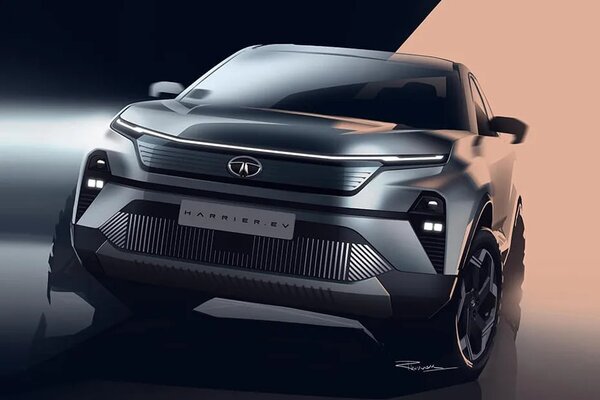Meet zinc, the cheap metal that can replace lithium as EV batteries


A metal best known for galvanizing steel is making the jump into a developing $30 billion energy-storage market for electrical grids that’s increasingly seen as key to unleashing solar and wind power upon the world.
Less than four months after Governor Andrew Cuomo vowed to produce 100% of New York’s electricity from clean sources by 2040, the state power authority launched an innovation challenge involving 60 companies in a quest to reach that goal. The winner: A Canada-based startup whose pitch can be wrapped up in two words: Think zinc.
Also check these Vehicles
Battery systems built around zinc, they said, don’t catch fire like lithium-ion systems. The longer they run, the less costly they are in comparison. And zinc is cheaper and more widely available. It’s a pitch drawing interest not just in New York, which in January initiated a $2.55 million project with the winning startup. Canada and Indonesia are funding their own zinc-battery projects.
“Storage for utilities is an untapped market," said Ron MacDonald, the head of Zinc8 Energy Solutions, the company that won the state challenge. “It’s a holy grail."
Lithium-ion batteries were first commercialized in 1991 and are used in applications ranging from electronics to vehicles. As utilities turned toward renewables to generate electricity, they were a natural choice to fill in when solar or wind was interrupted.
Meanwhile, zinc-based batteries, with their lower charge rates, were limited to tiny hearing aids until about two years ago. That’s when engineers first discovered how to make them rechargeable on a commercial scale. Since then, companies including Zinc8, NantEnergy Inc. and e-Zn Inc. have been targeting their use for utilities, where they can accrue energy over an entire day and utilize it at night.
"There’s no question lithium and lead-acid batteries currently dominate the energy storage market," said Andrew Green, Executive Director at the International Zinc Association. “But we’re the upcoming group."
In January, Zinc8 penned a three-year contract with the New York State Power Authority to develop a demonstration project that can produce back up power for a municipal building or a building on a college campus for 8 hours, at a cost of around $250 per kilowatt hour.
The Vancouver-based company is in the process of finding a right-sized site for the project, most likely in western New York, MacDonald said in an interview. Once that’s done, the system could be up and working by 2022, he said.
The power authority has set a goal to achieve 3 gigawatts of energy-storage statewide by 2030 to support Cuomo’s Green New Deal. The company goal, according to MacDonald: “Go through testing in different scenarios where we can efficiently add our batteries" to different types of grids.
The New York project “opens the door for Zinc8 to deploy its technology into the broader utility market," he said.
Hearing Aids
The idea behind zinc batteries isn’t new. They’ve long been used in hearing aids because they’re both light in weight and safe. But there are markets they still can’t breach: For instance, zinc-based batteries still can’t replenish quickly enough to be used for the electric vehicle market.
Like other batteries, zinc-air systems generate electricity from a chemical reaction. But instead of having all reactants located within the cell, they pull oxygen in from the outside through tiny holes. The oxygen then reacts with molecules inside the porous zinc to free electrons that travel through a circuit to the outside contact points.
Using outside oxygen makes the batteries less flammable than lithium-ion systems. With a lithium battery, the oxygen is locked inside the cell so the fire keeps going even if you put a wet blanket on it, said Fabio Albano, the vice president of technology at NantEnergy.
Safe, Cheap
At the same time, there’s no toxic elements involved. Raw lithium can be corrosive to the eyes, the skin and the respiratory tract when not properly handled. And zinc is relatively cheap: Lithium was trading at around $8,500 a metric ton last month, according to Benchmark Mineral Intelligence. Zinc traded at an average of $2,117.94 a ton.
At play is a stationary storage market that’s forecast to grow globally to 155 gigawatt hours over the next 10 years from 23 now, according to James Frith, an energy storage analyst at BloombergNEF. Frith also also sees the value of the market, including batteries, installation and equipment costs, reaching $30 billion within a decade.
Arizona-based NantEnergy already has a working solar storage microgrid on Madagascar, with more than half the financing coming from a $800,000-grant from the U.S. Trade Development Agency. It’s also formed joint ventures with Indonesia to provide energy storage for microgrids in remote villages there.
Because the microgrids are located in isolated areas, powering up communication and basic services, the lack of flammability is especially appealing, Albano said by phone.
OPEC Lesson
Meanwhile, Toronto-based e-Zn recently won $4.3 million in grants from the Canadian government to develop projects there. The first is to provide power for a manufacturing facility outside Toronto, with a duration capacity of 48 hours.
James Larsen, the e-Zn CEO, sees another advantage for zinc over lithium-based batteries.
“What’s attractive for me is that it is a truly global resource you can find almost anywhere," Larsen said by telephone. "We learned the lessons from OPEC, where a few nations control a very important resource. We’re going down that path with lithium-ion."
Global zinc production reached 13 million metric tons in 2019, and there are around 250 million tons in reserves, according to the U.S. Geological Survey. In comparison, about 77,000 metric tons of lithium were produced. Lithium reserves are estimated at around 17 million tons.
While there are barriers to be overcome by zinc-base batteries, utilities “need to be more familiar with them through things like pilot projects, which can then give them confidence to build further projects," BloombergNEF’s Frith said.








 64kWh
64kWh 350 km
350 km


















